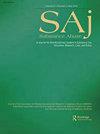A Medical Student-Led Model for Telephone-Based Opioid Overdose Education and Naloxone Distribution during the Covid-19 Pandemic
IF 2.4
3区 医学
Q2 SUBSTANCE ABUSE
引用次数: 2
Abstract
Background: The co-occurrence of the COVID-19 pandemic and opioid epidemic has increased the risk of overdose and death for patients with opioid use disorder (OUD). COVID-19 has also exacerbated already limited access to opioid overdose education and naloxone distribution (OEND). In this context, we aim to increase access to OEND for patients at risk for opioid overdose. Methods: Medical student volunteers were trained to conduct telephone-based OEND, and subsequently contacted all patients at a NYC primary care clinic for people who use drugs as well as those presenting to the hospital with OUD or a history of opioid overdose. Interested patients who completed the training received naloxone kits via mail or at hospital discharge. Results: OEND provision was converted to a remote-only model from May to June 2020. During this time, eight pre-clinical medical students called a total of 503 high-risk patients. Of these patients, 165 were reached, with 90 (55%) accepting telephone-based OEND. Comparing across populations, 51% of primary care patients versus 76% of ED/hospitalized patients accepted opioid overdose education. Eighty-four total patients received naloxone. Conclusions: We have outlined a scalable, adaptable model by which clinics and hospitals with affiliated medical schools can provide OEND by telephone. Medical student-driven, telephone-based OEND efforts can effectively reach at-risk patients and increase naloxone access.新冠肺炎大流行期间基于电话的阿片类药物过量教育和纳络酮分布的医学研究生模型
背景:COVID-19大流行和阿片类药物流行的共同发生增加了阿片类药物使用障碍(OUD)患者过量用药和死亡的风险。COVID-19还加剧了本已有限的获得阿片类药物过量教育和纳洛酮分发(OEND)的情况。在这种情况下,我们的目标是增加有阿片类药物过量风险的患者获得OEND的机会。方法:医学生志愿者接受培训,进行基于电话的OEND,并随后联系纽约市初级保健诊所的所有患者,包括使用药物的患者以及因OUD或阿片类药物过量病史而就诊的患者。有兴趣完成培训的患者通过邮件或出院时收到纳洛酮包。结果:2020年5月至6月,OEND提供转换为远程模式。在此期间,8名临床预科医学生共呼叫了503名高危患者。在这些患者中,165人获得了治疗,其中90人(55%)接受了基于电话的OEND。在人群中进行比较,51%的初级保健患者和76%的急诊科/住院患者接受了阿片类药物过量教育。84例患者接受纳洛酮治疗。结论:我们概述了一个可扩展的、适应性强的模型,通过该模型,有附属医学院的诊所和医院可以通过电话提供OEND。医学生推动的基于电话的OEND努力可以有效地接触到高危患者,并增加纳洛酮的使用。
本文章由计算机程序翻译,如有差异,请以英文原文为准。
求助全文
约1分钟内获得全文
求助全文
来源期刊

Substance abuse
SUBSTANCE ABUSE-
CiteScore
5.90
自引率
2.90%
发文量
88
审稿时长
>12 weeks
期刊介绍:
Now in its 4th decade of publication, Substance Abuse journal is a peer-reviewed journal that serves as the official publication of Association for Medical Education and Research in Substance Abuse (AMERSA) in association with The International Society of Addiction Medicine (ISAM) and the International Coalition for Addiction Studies in Education (INCASE). Substance Abuse journal offers wide-ranging coverage for healthcare professionals, addiction specialists and others engaged in research, education, clinical care, and service delivery and evaluation. It features articles on a variety of topics, including:
Interdisciplinary addiction research, education, and treatment
Clinical trial, epidemiology, health services, and translation addiction research
Implementation science related to addiction
Innovations and subsequent outcomes in addiction education
Addiction policy and opinion
International addiction topics
Clinical care regarding addictions.
 求助内容:
求助内容: 应助结果提醒方式:
应助结果提醒方式:


